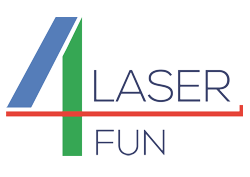Results of the work in the Laser4Fun project has been published as:
Sabri Alamri and Andrés F. Lasagni (2017) Direct laser interference patterning of transparent and colored polymer substrates: ablation, swelling, and the development of a simulation model. Proc. SPIE 10092, Laser-based Micro- and Nanoprocessing XI, 1009219 (February 17, 2017)
Abstract
It is well known that micro and sub-micrometer periodical structures play a significant role on the properties of a surface. Ranging from friction reduction to the bacterial adhesion control, the modification of the material surface is the key for improving the performance of a device or even creating a completely new function. Among different laser processing techniques, Direct Laser Interference Patterning (DLIP) relies on the local surface modification process induced when two or more beams interfere and produce periodic surface structures. Although the produced features have controllable pitch and geometry, identical experimental conditions applied to different polymers can result on totally different topologies. In this frame, observations from pigmented and transparent polycarbonate treated with ultraviolet (263 nm) and infrared (1053 nm) laser radiation permitted to identify different phenomena related with the optical and chemical properties of the polymers. As a result from the experimental data analysis, a set of material-dependent constants can be obtained and both profile and surface simulations can be retrieved, reproducing the material surface topography after the surface patterning process.
Links
- https://www.spiedigitallibrary.org/conference-proceedings-of-spie/10092/1/Direct-laser-interference-patterning-of-transparent-and-colored-polymer-substrates/10.1117/12.2251740.full?SSO=1 (includes video)
- http://proceedings.spiedigitallibrary.org/proceeding.aspx?articleid=2605571
- http://dx.doi.org/10.1117/12.2251740
